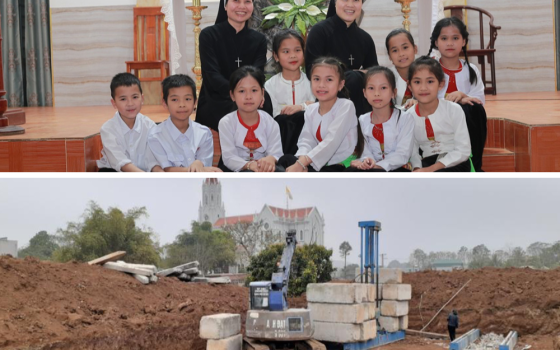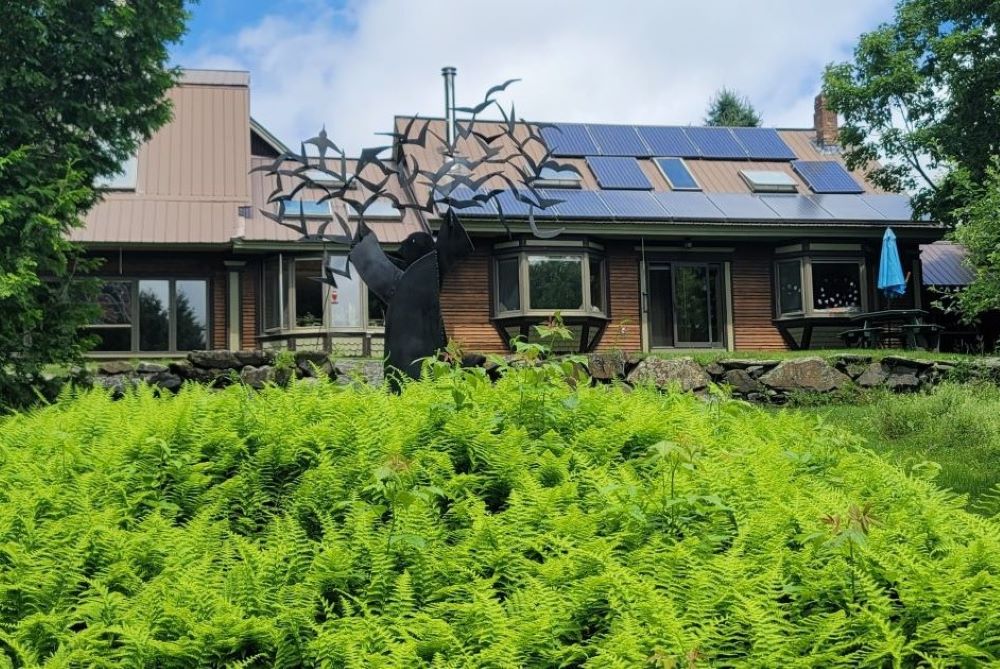
The Sisters of the Earth Community at Green Mountain Monastery and Thomas Berry Sanctuary is in Greensboro, Vt. The 160-acre site includes the monastery's main house, shown from the back. The sculpture, St. Francis and the Birds by artist Frederick Franck, honors Fr. Thomas Berry. (GSR photo/Gail DeGeorge)
Editor's note: "Evolving Religious Life," a new series from Global Sisters Report, is exploring how Catholic sisters are adapting to the realities of congregations in transition and new forms of religious life. While we write often about these trends, this particular series will focus more closely on sisters' hopes for the future.
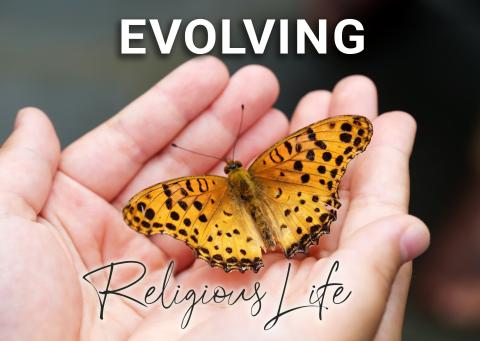
Deep along two-lane roads, nestled amid the undulating, verdant hillsides of Vermont, the Sisters of the Earth Community at Green Mountain Monastery and Thomas Berry Sanctuary beckons visitors to step into a serene and deeply spiritual space — and lives as an example of how religious life is evolving.
The 160-acre grounds are a realization of a vision by Sr. Gail Worcelo, who with then-lay associate Bernadette Bostwick, were missioned by the Passionist nuns at St. Gabriel's Monastery in Pennsylvania in 1999 to start a new community centered on care for the earth and incorporating many of the teachings of Passionist Fr. Thomas Berry, who was cofounder. (Passionist Sr. Rita Ordakowski committed to six months to help the new community get started.)
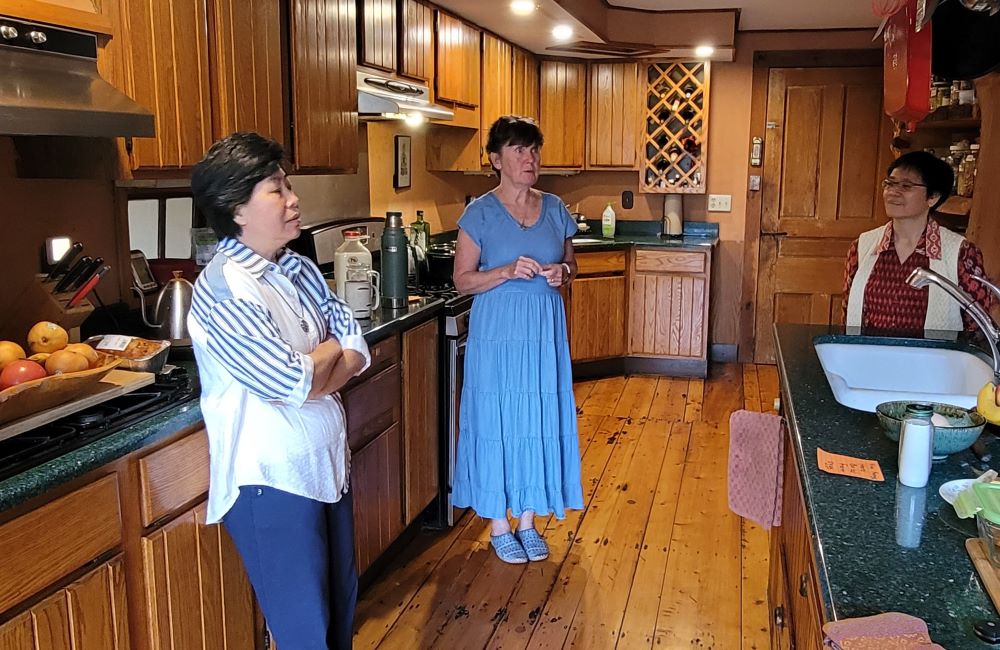
Members of the Sisters of the Earth Community gather in the kitchen at Green Mountain Monastery. In the foreground is Sr. Aime Hendani of Indonesia. Sr. Gail Worcelo is at the stove. Malaysian Sr. Maria Dipal, background, is discerning about joining the community. (GSR photo/Gail DeGeorge)
A renowned thinker, scholar and cultural historian, Berry was an ardent proponent of ecospirituality, coining the term "ecozoic" in a conversation with Brian Swimme, director of the Center for the Story of the Universe and a professor at the California Institute of Integral Studies in San Francisco, for their 1992 book, The Universe Story. Ecozoic, "house of life" — describes a new era in which humans would halt the destruction of species caused by the impact of extractive industries, pollution and abuse of the earth, and develop a closer relationship with the earth and nature.
Humans are integrally connected to the earth and the cosmos. We have a responsibility to care for the planet and its other creatures, Berry posited, and Christians — women religious in particular — can help lead the way.
"Think of Earth as a lifeboat — if the Earth goes down, all our ministries, all our good works, all our contributions are going to go down with it."
—Sr. Gail Worcelo
Berry never visited the monastery but asked that he be buried there. Upon his death on June 1, 2009, at age 94 in his birthplace of Greensboro, North Carolina, he was interred at the monastery that bears his name in Greensboro, Vermont. His gravesite is lovingly tended by the sisters and often serves as a spiritual destination for visitors, including hundreds of co-sisters and brothers, Thomas Berry Partners in Mission and volunteers.
A 25th anniversary celebration of the founding of the community and memorial of Berry, was held June 1 this year, drawing more than 80 supporters of the community to the monastery and hundreds more online. The memorial included a liturgy, art displays and a concert on the theme "awe and wonder."
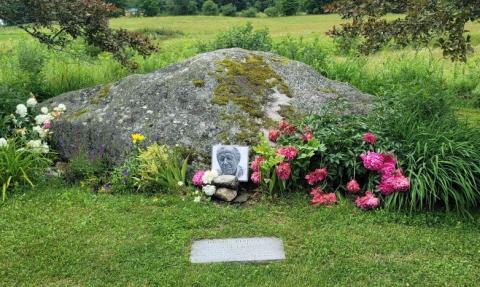
At his request, Fr. Thomas Berry was buried at Green Mountain Monastery. He died June 1, 2009, at age 94. (GSR photo/Gail DeGeorge)
Each part of the monastery exhibits its focus on being earth conscious and demonstrating an appreciation and reverence of God's creations. The main house has a large, warm and welcoming kitchen, where vegetarian and often vegan meals are prepared. Extensive gardens and a greenhouse supply much of what is needed for meals. The dining room overlooks the fields and a sculpture of St. Francis and the birds, created by artist and scholar Frederick Franck in honor of Berry.
Throughout the main areas of the house, an adjoining gathering space, a newly constructed guest house, a hermitage and a yurt are gentle reminders of the importance of prayer, peace and connection with God, the universe and the earth.
Worcelo was inspired to found the community after hearing Berry speak at a presentation during her formation as a Passionist sister. She studied under him, and over the course of several years, the seed to begin a religious community focused on the earth and the need for humans to care for it, took root.
When the St. Gabriel Monastery in 1999 asked for ideas for new missions and communities, Worcelo submitted the idea. It was approved by the congregation's leadership, which missioned Worcelo and a small group of women to join her in this quest. (See timeline for details.)
Since then, women religious from other congregations have joined, including Sr. Amelia (Amie) Hendani and Sr. Kristiana Maria Prasetyo, both from Indonesia, and others are discerning. (Bostwick, an associate of the St. Gabriel Monastery at the time she cofounded the Sisters of the Earth Community and Green Mountain Monastery along with Worcelo and Berry, took public vows with the Sisters of the Earth.)
At the invitation of a religious sister from Kenya, Worcelo was invited to Kenya and began meeting with lay women and associates in 2020, continuing the process online. Worcelo and Hendani met with Archbishop Philip Anyolo of Nairobi in January 2023 and in August 2024, the archbishop welcomed the sisters to Nairobi to continue their work.
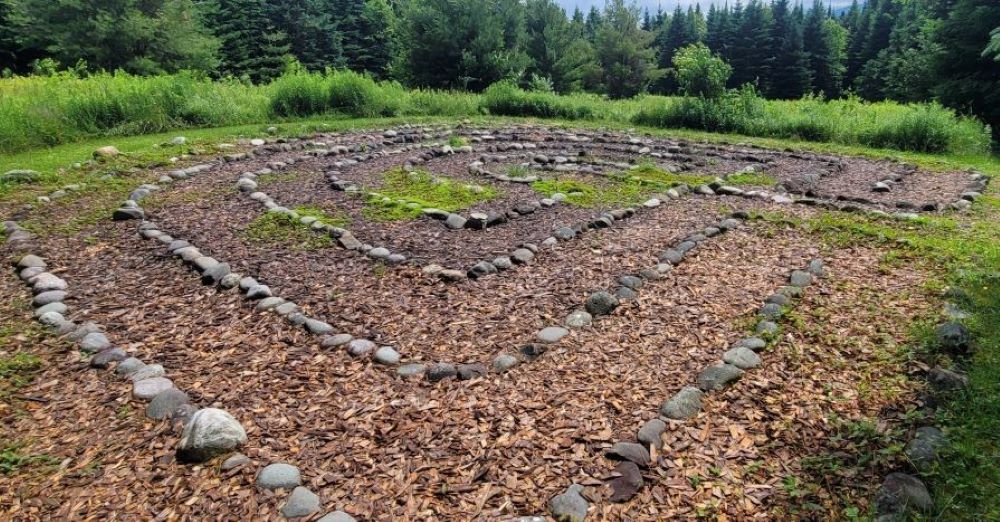
A labyrinth at Green Mountain Monastery and Thomas Berry Sanctuary provides a place for meditation and prayer. It is part of the Sisters of the Earth Community's 160-acre site in Greensboro, Vt. (GSR photo/Gail DeGeorge)
Many other women religious communities and related organizations have eco-ministries and retreat centers that focus on nature and protecting the environment, so what makes Sisters of the Earth so special?
Over a delicious lunch of spinach rice chard casserole — made with chard from their garden — Worcelo explained the distinction, quoting from the community's website. The Sisters of the Earth Community, "is the first community of Catholic sisters founded specifically for Earth healing and protection within the ecozoic era." Other communities approach their eco-ministries with a human-first approach, she noted, adding that all efforts to protect the environment are needed.
But the Sisters of the Earth Community stresses the integral connection between humans, the earth and the cosmos. Moreover, the founding of the Sisters of the Earth, Worcelo notes, was 16 years before Pope Francis published his encyclical "Laudato Si', On Care for Our Common Home," about the environment, climate change and harmful hazardous economic and industrial practices that endanger the earth.
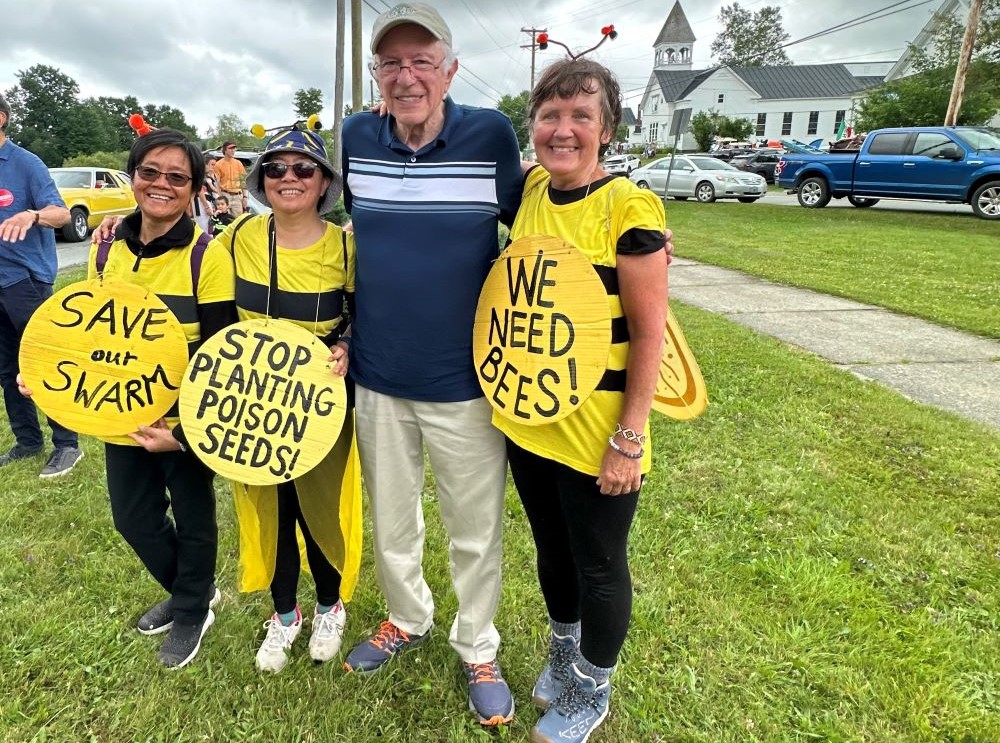
Sisters of the Earth community members, from left, Srs. Maria Dipal, Amie Hendani and Gail Worcelo, pose with U.S. Sen. Bernie Sanders at a 2024 Fourth of July parade in Greensboro, Vt. (Courtesy of Green Mountain Monastery)
The Sisters of the Earth have received financial backing and spiritual support for its quest as a new congregation from several women religious, in addition to hundreds of supporters and lay associates.
Worcelo often helps facilitate retreats, gives workshops and other training to congregations and organizations. She facilitated a breakout session on evolutionary ethics at the 2004 Leadership Conference of Women Religious (LCWR) and Conference of Major Superiors of Men's joint assembly.
Yet the Sisters of the Earth Community cannot join LCWR as members because it is not a public association, the next canonical step in receiving recognition by the Catholic Church as a congregation. That step can take decades — 50 years or more — according to canon law experts. Worcelo hopes it doesn't take that long. One of the challenges has been the turnover of bishops in the diocese, making it difficult to build a relationship and continue the process, she said.

The dining table just off the kitchen overlooks the grounds of the Green Mountain Monastery and Thomas Berry Sanctuayr in Greensboro, Vt. (GSR photo/Gail DeGeorge)
Although the Diocese of Burlington, Vermont, welcomed the community as a private association in 1999, in more recent years, the diocese has been less receptive. One year, the diocese planned a program on the "Season of Creation" for which the Sisters of the Earth donated materials. However, the community was not invited to be a part of the event and was told by the diocese that none of the members could use the term "Catholic sister" to describe themselves.
That hurt, Worcelo said. "What is perplexing is that we are very grounded," she said. "To say we're not Catholic and not Cristo-centric has no base and it is painful."
"I lived in a monastery for 18 years. I was on the [Passionist] leadership team and I was the formation directress and I was missioned by our community to begin this new direction with a priest who was well respected by his community," she said. "The idea that we are not Catholic is not founded in reality."
The Diocese of Burlington, Vermont, declined to comment.
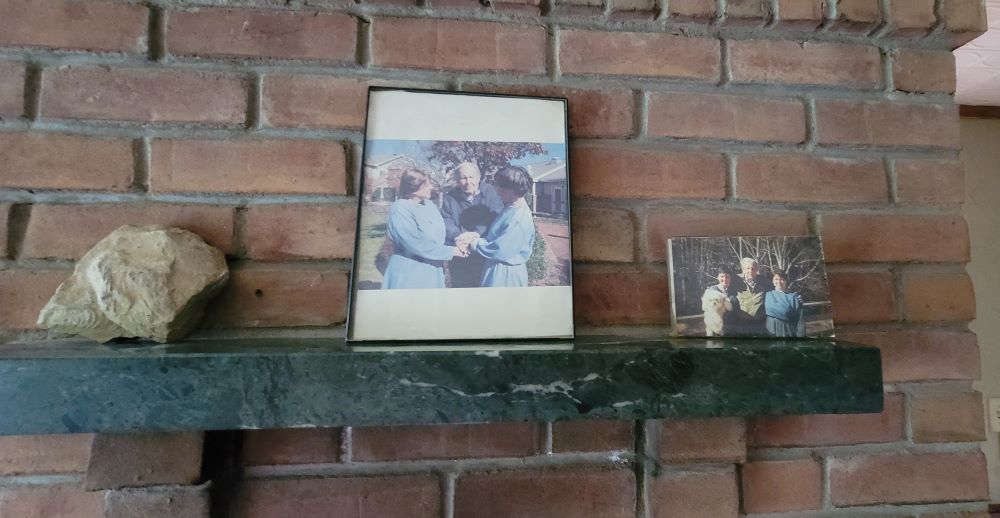
Early photos of Green Mountain Monastery cofounders Srs. Gail Worcelo and Bernadette Bostwick, and Fr. Thomas Berry adorn a fireplace mantel at the monastery. (GSR photo/Gail DeGeorge)
Sr. Cathy Mueller, former president of the Loretto Community and member of the Sisters of Earth Network, where she met Worcelo, notes that the Sisters of the Earth Community was a leader in recognizing the connection to the earth, which has since become central to many women religious congregations.
"They started something that said it straight from the beginning and we as other religious communities have understood the truth of it and are evolving also," Mueller said. "That awareness has really grown among sisters which is changing how we interpret and vision consecrated religious life."
She sympathizes with Worcelo and the challenges they've had getting to the next step as a community within the church process, but the Sisters of the Earth Community's contribution to religious life is enormous, she said.
"That whole understanding of the connection with earth is part of our reality and affects the priorities of almost every religious congregation," Mueller said. "It's acted out in our spirituality, our actions for justice — those are the very things that are evolving through the Green Mountain Monastery. What a gift to the world of what women religious are doing."
The Lorettos have been one congregation helping Green Mountain Monastery and the Sisters of the Earth Community through no-interest loans and other support because of the validity of the vision, Mueller added. "This is an important piece of the evolution of religious life," she said.
Advertisement
Worcelo and other members of the Sisters of the Earth Community will meet in the next few months with Bishop John Joseph McDermott, who was installed as the 11th bishop of the Diocese of Burlington, Vermont, in July. Worcelo is hopeful that the meeting will go well and that the bishop will recognize the community's contribution to the church, the world and religious life.
"This mission should be upheld and promoted and shared and invited in the church," Worcelo said. "It's what's on the leading edge of Christian responsibility, the planet — it is the largest pro-life issue. Think of Earth as a lifeboat — if the Earth goes down, all our ministries, all our good works, all our contributions are going to go down with it."




